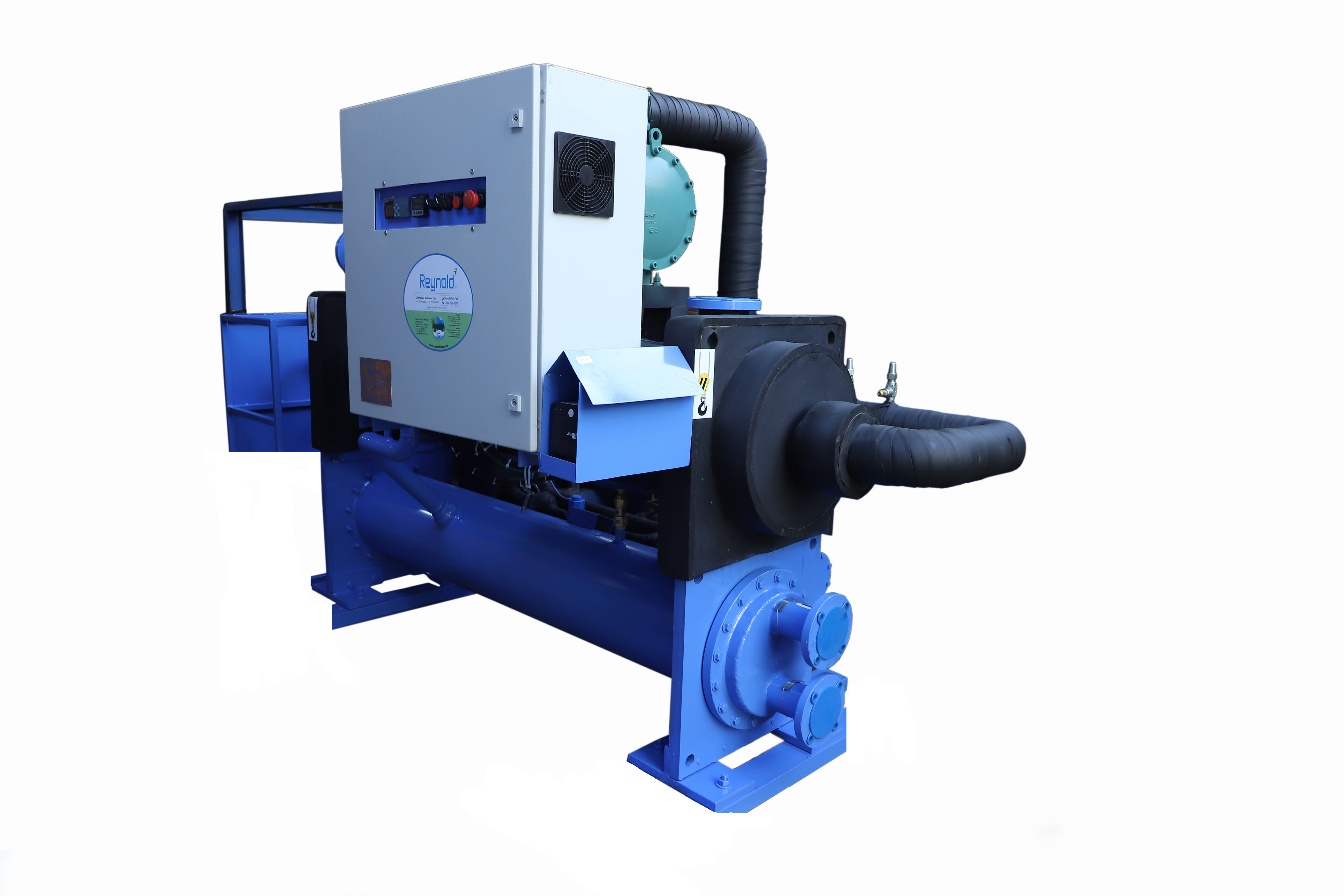Working Principle of Chiller?
A chiller works on the principle of vapour compression or vapour absorption. Chillers provide a continuous inflow of coolant to the cold side of a process water system at a desired temperature of about 50 °F( 10 °C). The coolant is also pumped through the process, extracting heat out of one area of a installation(e.g., machinery, process equipment, etc.) as it flows back to the return side of the process water system.

A chiller uses a vapour compression mechanical refrigeration system that connects to the process water system through a device called an evaporator. Refrigerant circulates through an evaporator, compressor, condenser and expansion device of a chiller. A thermodynamic process occurs in each of below factors of a chiller. The evaporator functions as a heat exchanger similar that heat captured by the process coolant flow transfers to the refrigerant. As the heat- transfer takes place, the refrigerant evaporates, changing from a low- pressure liquid into vapor, while the temperature of the process coolant reduces.
The refrigerant also flows to a compressor, which performs multiple functions. First, it removes refrigerant from the evaporator and ensures that the pressure in the evaporator remains low enough to absorb heat at the correct rate. Second, it raises the pressure in outgoing refrigerant vapor to ensure that its temperature remains high enough to release heat when it reaches the condenser. The refrigerant returns to a liquid state at the condenser. The idle heat given up as the refrigerant changes from vapor to liquid is carried away from the environment by a cooling medium( air coold chiller and water cooled chiller).




Nice Blog for chiller working principle